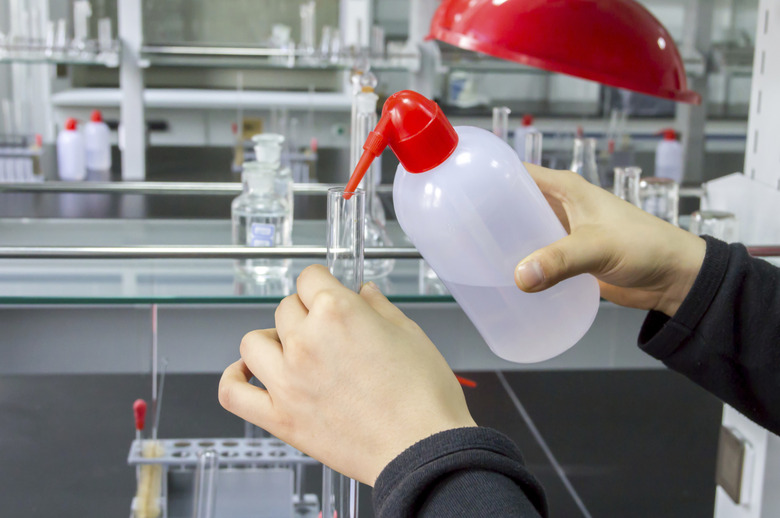Density Vs. Viscosity
The expression 'slower than molasses in January' refers to two intrinsic properties of fluids: viscosity and density. Viscosity describes a liquid's resistance to flow—compare molasses and water, for example—and is measured in pascal-seconds. Density is a measure of the mass of a substance per unit volume and is measured in grams per milliliter.
How Slow Can You Flow?
How Slow Can You Flow?
Imagine a garden hose with no nozzle. If you turn on the tap, water will come shooting out the open end. However, if the pipes were filled with mud instead of water, you'd be lucky to get sporadic gobs coming out; mud has a higher viscosity than water. Generally, low-viscosity fluids, such as water, also have a low density. At a balmy 70 degrees Fahrenheit, water has a density of 0.99 grams per milliliter and a viscosity of 0.0009 pascal-seconds. Some metals are an exception to this trend. Liquid mercury has a density of 13.5 grams per milliliter and a viscosity of 0.016 pascal-seconds.
Cite This Article
MLA
Robbins, Carolyn. "Density Vs. Viscosity" sciencing.com, https://www.sciencing.com/density-vs-viscosity-5791773/. 24 April 2017.
APA
Robbins, Carolyn. (2017, April 24). Density Vs. Viscosity. sciencing.com. Retrieved from https://www.sciencing.com/density-vs-viscosity-5791773/
Chicago
Robbins, Carolyn. Density Vs. Viscosity last modified March 24, 2022. https://www.sciencing.com/density-vs-viscosity-5791773/
